Friday the 13th marks the announcement of two new product lines for CMMG: the “ultra-compact,” lightweight BANSHEE AR line and the DefCan suppressor line. Thanks to Silencer Shop, TTAG got our hands on a couple of SBR-configured BANSHEEs with matching DefCans and spent a week putting lead through them. First up for review: the Mk4 BANSHEE 300 BLK SBR . . .
 The BANSHEE line rocks the shortest barrels CMMG offers for each caliber. In the case of the 300 BLK variants, that means an 8-inch tube with a 1:7 twist. With the stock collapsed, overall length on the SBR is a mere 22 inches. In fact, it’s shorter than the 24.5-inch pistol variant with its Tailhook Mod 2 brace.
The BANSHEE line rocks the shortest barrels CMMG offers for each caliber. In the case of the 300 BLK variants, that means an 8-inch tube with a 1:7 twist. With the stock collapsed, overall length on the SBR is a mere 22 inches. In fact, it’s shorter than the 24.5-inch pistol variant with its Tailhook Mod 2 brace.
Handy and compact — heck, it’ll fit in most backpacks — the BANSHEE 300 BLK SBR also tips the scales at a mere 5.2 lbs. Not exactly record-breakingly lightweight, but as you’ll see it’s cutting no corners, either.
 Each BANSHEE features ambidextrous touches, like the safety selector and dual-sling-loop receiver end plate seen above.
Each BANSHEE features ambidextrous touches, like the safety selector and dual-sling-loop receiver end plate seen above.
 Likewise, CMMG’s new charging handle is ambidextrous — pulling on one or both sides will unlock it.
Likewise, CMMG’s new charging handle is ambidextrous — pulling on one or both sides will unlock it.
 Speaking of pulling, simply grab the stock and rip it rearwards to extend it. This is CMMG’s new RIPSTOCK and aside from being lightweight and minimalist, it’s fast.
Speaking of pulling, simply grab the stock and rip it rearwards to extend it. This is CMMG’s new RIPSTOCK and aside from being lightweight and minimalist, it’s fast.
It’s also “smart.” By moving a bolt into one of five threaded holes, the user can set where they want the stock to stop when they pull it rearwards. Squeezing the release lever will bypass the bolt, but taking advantage of the “FASTBACK” just-pull-the-stock-back-to-extend-it feature will park it in front of that bolt.
Additionally, the bolt can be used to disable the FASTBACK feature so depressing the release lever is necessary to extend the RIPSTOCK from the fully-collapsed position.
 Machined from 6061-T6 aluminum and Cerakoted, the RIPSTOCK looks and feels good. Obviously the aluminum buttpad doesn’t provide much cushion for the pushin’, but in the BANSHEE’s available calibers it isn’t needed. CMMG’s design leaves options open for replacement buttpads and bolt-on accessories.
Machined from 6061-T6 aluminum and Cerakoted, the RIPSTOCK looks and feels good. Obviously the aluminum buttpad doesn’t provide much cushion for the pushin’, but in the BANSHEE’s available calibers it isn’t needed. CMMG’s design leaves options open for replacement buttpads and bolt-on accessories.
 Under the 7-inch CMMG RML M-LOK handguard is an SLR Rifleworks adjustable gas block. This is a great touch and value-add on a 300 Blackout, which may run supersonic ammo and/or subsonic ammo with or without a suppressor.
Under the 7-inch CMMG RML M-LOK handguard is an SLR Rifleworks adjustable gas block. This is a great touch and value-add on a 300 Blackout, which may run supersonic ammo and/or subsonic ammo with or without a suppressor.
 Under the hood, we find an M16-style bolt carrier group. Again, there’s nothing weird going on here to keep the short barreled rifle’s weight down and no corners were cut to cut ounces.
Under the hood, we find an M16-style bolt carrier group. Again, there’s nothing weird going on here to keep the short barreled rifle’s weight down and no corners were cut to cut ounces.
 In fact, parts quality, finish, and fit overall is extremely high. For the asking price, though, an upgraded trigger wouldn’t hurt. While CMMG’s Single Stage Mil-Spec trigger is a meaningful step up in smoothness and clean break from many Mil-Spec/Parts Kit AR triggers, it’s still heavier and grittier than most of us want.
In fact, parts quality, finish, and fit overall is extremely high. For the asking price, though, an upgraded trigger wouldn’t hurt. While CMMG’s Single Stage Mil-Spec trigger is a meaningful step up in smoothness and clean break from many Mil-Spec/Parts Kit AR triggers, it’s still heavier and grittier than most of us want.
 Aside from the stock and handguard, the BANSHEE sports Magpul furniture. An MOE Pistol Grip, MVG Foregrip, and Triggerguard.
Aside from the stock and handguard, the BANSHEE sports Magpul furniture. An MOE Pistol Grip, MVG Foregrip, and Triggerguard.
 Not a fan of this slate blue BANSHEE? The line is also available in about 10 of CMMG’s other Premier Cerakote finishes including even, yes, black (gasp). (The 9mm SBR, seen above at bottom, will be reviewed separately.)
Not a fan of this slate blue BANSHEE? The line is also available in about 10 of CMMG’s other Premier Cerakote finishes including even, yes, black (gasp). (The 9mm SBR, seen above at bottom, will be reviewed separately.)
While the Cerakote job is very nicely done, it does have a downside . . .
 Cerakote simply isn’t as tough as Type III hardcoat anodizing, PVD coating, nitriding, etc. As you can see above, after only a hundred or so rounds into my first range session, when I paused for photos, the ejecting cases had already cut into the Cerakote on the brass deflector. Likewise, finish was already missing from the receiver where it’s rubbed by the charging handle.
Cerakote simply isn’t as tough as Type III hardcoat anodizing, PVD coating, nitriding, etc. As you can see above, after only a hundred or so rounds into my first range session, when I paused for photos, the ejecting cases had already cut into the Cerakote on the brass deflector. Likewise, finish was already missing from the receiver where it’s rubbed by the charging handle.
 On the BANSHEEs’ muzzle end you’ll find a suppressor-accepting flash hider, as CMMG’s new DefCan suppressors are available as QD jobs. The spring-loaded locking system clamps onto the dual-lug muzzle device very quickly and easily by pushing the suppressors towards the handguard and giving it approximately a quarter turn.
On the BANSHEEs’ muzzle end you’ll find a suppressor-accepting flash hider, as CMMG’s new DefCan suppressors are available as QD jobs. The spring-loaded locking system clamps onto the dual-lug muzzle device very quickly and easily by pushing the suppressors towards the handguard and giving it approximately a quarter turn.
 With no locking lever or button requiring your thumb’s attention, DefCans can be installed and removed even if they’re [mostly] run underneath a handguard.
With no locking lever or button requiring your thumb’s attention, DefCans can be installed and removed even if they’re [mostly] run underneath a handguard.
 As a suppressor makes my shooting experience so much more pleasant, I shot the BANSHEE almost exclusively suppressed with CMMG’s DefCan 3Ti. Don’t be scared away by the perspective in the photo above; the 3Ti is just 9.2 inches long and 1.5 inches in diameter.
As a suppressor makes my shooting experience so much more pleasant, I shot the BANSHEE almost exclusively suppressed with CMMG’s DefCan 3Ti. Don’t be scared away by the perspective in the photo above; the 3Ti is just 9.2 inches long and 1.5 inches in diameter.
 Well, “just” is relative and, on balance, it is a rather long .30 cal suppressor. That’s it on top in the photo above, with my Dead Air Sandman Ti below it and the Q Half Nelson below that.
Well, “just” is relative and, on balance, it is a rather long .30 cal suppressor. That’s it on top in the photo above, with my Dead Air Sandman Ti below it and the Q Half Nelson below that.
On literal balance, though, the all-titanium can is lightweight at 17.5 ounces. It took the handling of this nimble, short little SBR back into the realm of a typical AR rifle, which is certainly different but not necessarily bad.
A separate review on CMMG’s .30 cal and 9mm DefCans is coming soon, but suffice it to say that I have no real complaints. They sound great and the QD system is extremely fast and easy.
https://www.youtube.com/watch?v=5zqQ00_FupQ
 On the range I found the Mk4 BANSHEE 300 BLK SBR to be an extremely well-sorted rifle. It ran smoothly and confidently; all components working together just as you’d hope from a properly-tuned and -assembled factory gun.
On the range I found the Mk4 BANSHEE 300 BLK SBR to be an extremely well-sorted rifle. It ran smoothly and confidently; all components working together just as you’d hope from a properly-tuned and -assembled factory gun.
The gas system appeared to be tuned just open enough to cycle subsonic ammo without the suppressor attached. This left it a bit gassy with supersonic ammo plus suppressor, so if it were my rifle I’d adjust that SLR gas block for suppressed-only use (though if I were CMMG I would have tuned it exactly as they did).
 Running Lancer L5AWM mags fully-loaded with Freedom Munitions 220 grain HUSH subsonic ammo (use coupon code “TTAG” for 5% off everything on the Freedom Munitions website), I did find the magwell to be slightly on the snug side. Granted, yes, the magazine mouth flexes open a bit (Lancer’s new 300 BLK-specific magazines change the internal geometry to prevent this), but they stuck more in the BANSHEE than I’m used to.
Running Lancer L5AWM mags fully-loaded with Freedom Munitions 220 grain HUSH subsonic ammo (use coupon code “TTAG” for 5% off everything on the Freedom Munitions website), I did find the magwell to be slightly on the snug side. Granted, yes, the magazine mouth flexes open a bit (Lancer’s new 300 BLK-specific magazines change the internal geometry to prevent this), but they stuck more in the BANSHEE than I’m used to.
Of course, this was notable only due to the lack of anything truly notable. The BANSHEE ran like a well-lubed sewing machine. I had zero malfunctions or hints of malfunctions of any sort.
It’s a smooth rifle, with the bolt locking precisely and easily into battery and a nice recoil impulse that’s soft and smooth, yet solid at the same time. All controls functioned properly and precisely as well, with clean detents (where applicable) and no sticking or grittiness. Again, it’s a well-sorted rifle and its quality is quite apparent while on the range.
…with one small nitpick: the RIPSTOCK, while surprisingly comfortable, utilitarian, and cool looking, wobbles more than I’d like when it’s fully extended and a little bit even when it’s not. Considering it’s CMMG’s own stock on CMMG’s own receiver extension, I’d expect tighter clearances.
 Shooting supersonic Hornady BLACK 110 grain V-Max (from Freedom Munitions, no less) at 75 yards, the BANSHEE was good for a couple of ~1-inch, 5-shot groups.
Shooting supersonic Hornady BLACK 110 grain V-Max (from Freedom Munitions, no less) at 75 yards, the BANSHEE was good for a couple of ~1-inch, 5-shot groups.
 With subsonic Hornady BLACK 208 grain A-Max rounds (again, from Freedom), group sizes were similar.
With subsonic Hornady BLACK 208 grain A-Max rounds (again, from Freedom), group sizes were similar.
Keep in mind this is 75, not 100 yards, but I was also shooting off of a backpack instead of a proper rifle rest (Chris, I’m gonna need that back) and the Mil-Spec trigger doesn’t do it any favors. Bottom line: it’s a straight shooter that’s more than accurate enough for hunting, defensive use, or range days.
 A factory SBR has the advantage of not requiring the buyer to engrave their information on it as they would when filing a Form 1 to turn an existing rifle or pistol into said SBR configuration. And I love that more companies are offering NFA firearms out the door.
A factory SBR has the advantage of not requiring the buyer to engrave their information on it as they would when filing a Form 1 to turn an existing rifle or pistol into said SBR configuration. And I love that more companies are offering NFA firearms out the door.
 However, yes, should you purchase a BANSHEE in SBR flavor you’re looking at the same paperwork and wait time as buying a suppressor; about 6-9 months before you can take possession and the same $200 tax, registration, etc. Turning your own firearm into an SBR requires the same tax, registration, and wait, but you get to use your rifle or pistol in the meantime.
However, yes, should you purchase a BANSHEE in SBR flavor you’re looking at the same paperwork and wait time as buying a suppressor; about 6-9 months before you can take possession and the same $200 tax, registration, etc. Turning your own firearm into an SBR requires the same tax, registration, and wait, but you get to use your rifle or pistol in the meantime.
Thankfully, for those looking to avoid the NFA hassles for any of the numerous reasons, CMMG is also selling all of the BANSHEE models configured as pistols. In that case, they’re treated just like any other pistol when it comes to purchase and ownership.
 I like this setup. In fact, I own a 300 BLK SBR with an 8.3-inch barrel. Sometimes it wears the Bushnell 1-4x 300BLK scope reviewed here, sometimes it wears the Trijicon TA44 ACOG with Primary Arms ACSS reticle mentioned here, but always it wears a suppressor. The 300 Blackout caliber was made for a BANSHEE kind of a gun, and if I’m honest the BANSHEE is smoother and better-sorted than my homebrew upper.
I like this setup. In fact, I own a 300 BLK SBR with an 8.3-inch barrel. Sometimes it wears the Bushnell 1-4x 300BLK scope reviewed here, sometimes it wears the Trijicon TA44 ACOG with Primary Arms ACSS reticle mentioned here, but always it wears a suppressor. The 300 Blackout caliber was made for a BANSHEE kind of a gun, and if I’m honest the BANSHEE is smoother and better-sorted than my homebrew upper.
With nothing but minor nits to pick, I find myself highly impressed with CMMG’s new BANSHEE line.
Specifications: Mk4 BANSHEE 300 BLK SBR
Barrel: 8.0-inch 1:7 twist, medium taper, 4140CM, SBN, .750 SLR Adjustable Gas Block
Muzzle: DefCan 3 Flash Hider, Threaded 5/8-24
Hand Guard: CMMG RML7
Furniture: Magpul MOE Pistol Grip, Compact Receiver Extension, Compact Stock, Magpul MVG Foregrip, Ambidextrous Sling Plate, Ambidextrous Selector, Ambidextrous Charging Handle
Receivers: Forged 7075-T6 AL Lower, Forged 7075-T6 AL Upper
Trigger: CMMG Single Stage Mil-Spec
Magazine: 30rd PMAG
Weight: 5.2 lbs
Length: 22″ (STOCK COLLAPSED)
MSRP: $1,449.95
Ratings (out of five stars):
Reliability * * * * *
Flawless function with two brands of supersonic and two brands of subsonic ammo, all in different bullet weights, whether suppressed or not. This gun was done right, and you can feel it.
Accuracy * * * *
300 Blackout, especially with subsonic loads, isn’t often lauded for its accuracy. The BANSHEE, however, turned in high marks with very respectable groups from a sub-par rest.
Customize This * * * * *
It’s an AR-15, after all. Change whatever you want. But with a nice, adjustable gas block, oversized ambi charging handle, ambi safety, cool stock, M-LOK handguard, and Magpul furniture, it sure doesn’t have much need for upgrading. The trigger, really, and that’s about it.
Overall * * * * 1/2
Half star ratings are generally a no-no, but as great as this rifle is it isn’t perfect. With a smoother trigger and a more precisely-fit stock, I’d give it five stars all day long. Those quibbles aside, CMMG’s BANSHEE 300 BLK is an extremely well-sorted, smooth, accurate, and reliable gun that’s just about as compact and handy as can be.
Ammo for this review provided by Freedom Munitions. Visit www.FreedomMunitions.com and use coupon code “TTAG” for 5% off site-wide on dozens of brands of ammunition, accessories, parts, optics, and more.


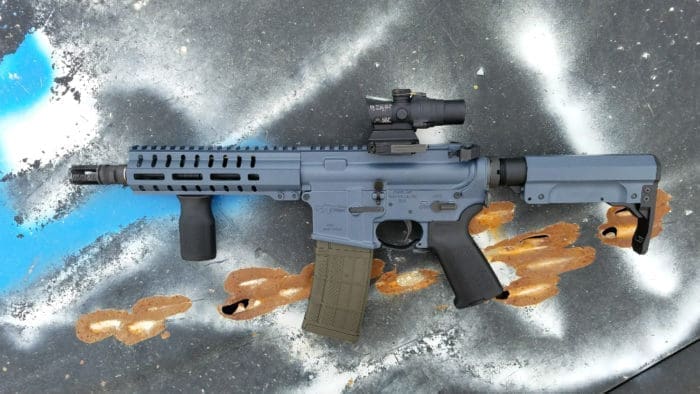
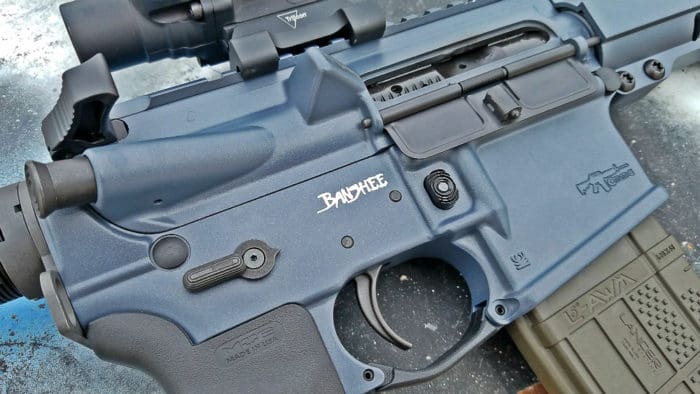
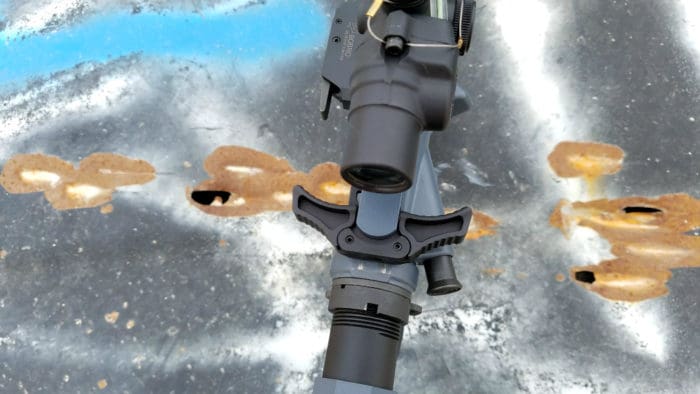
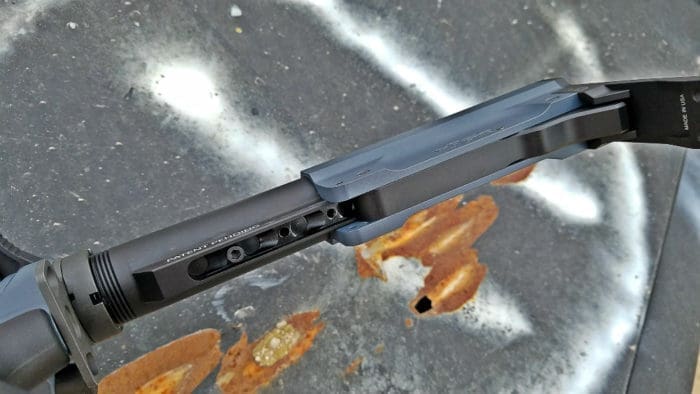
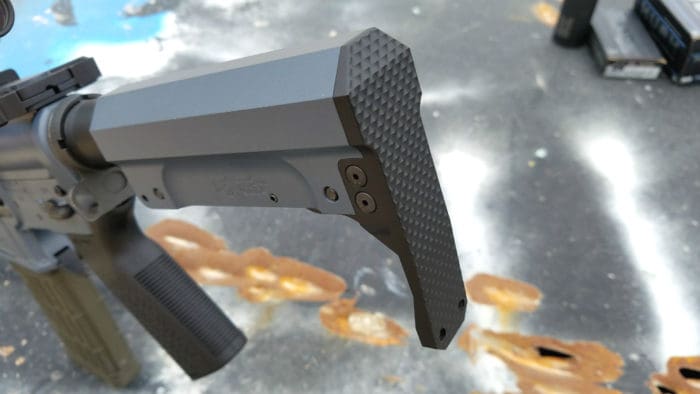
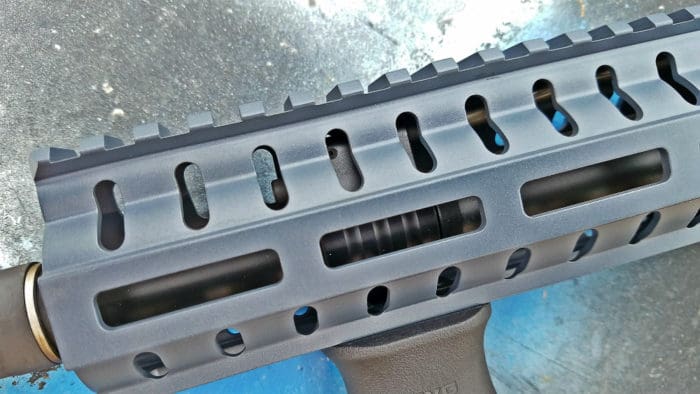
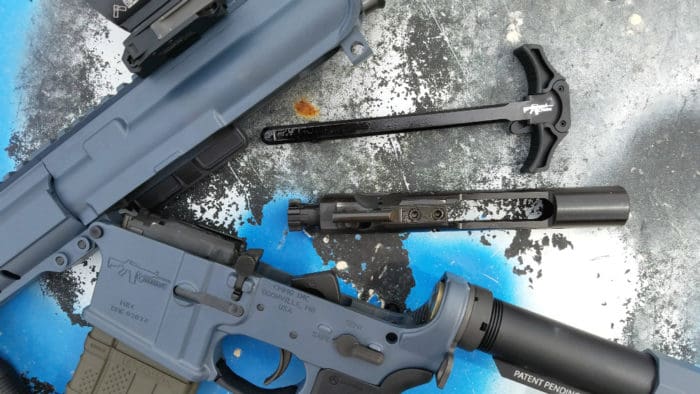
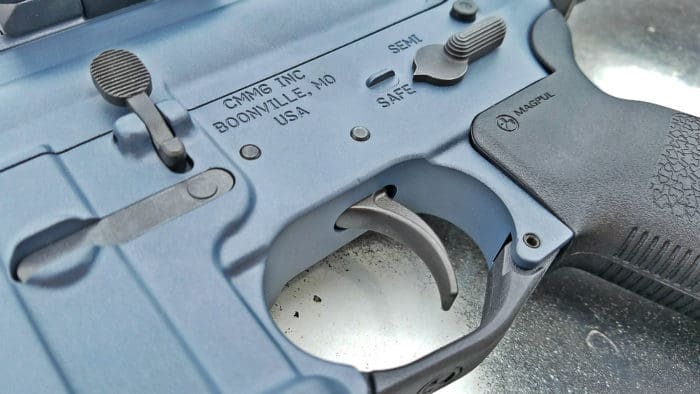

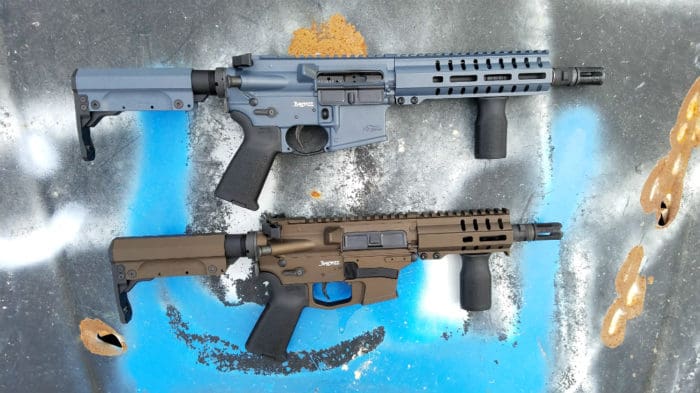

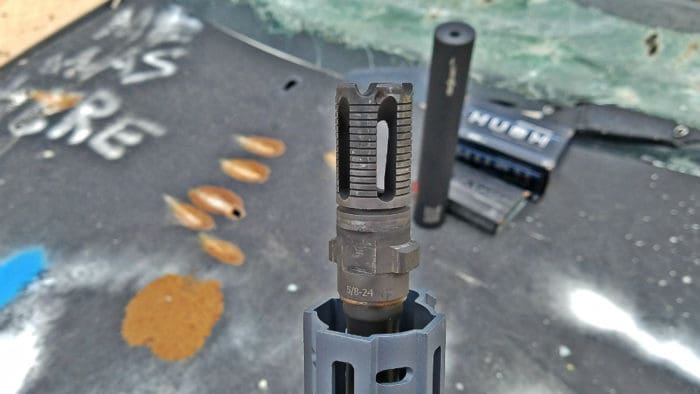
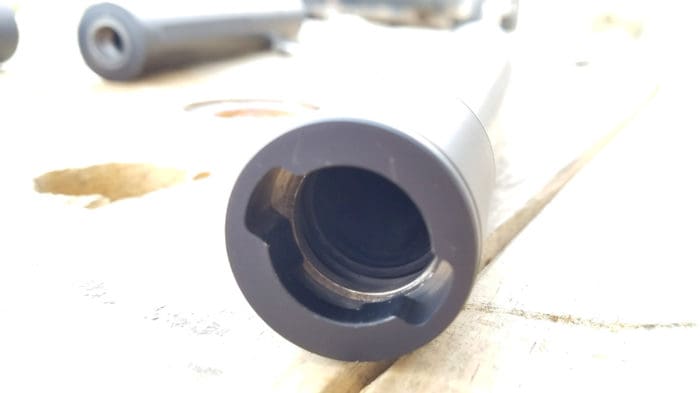
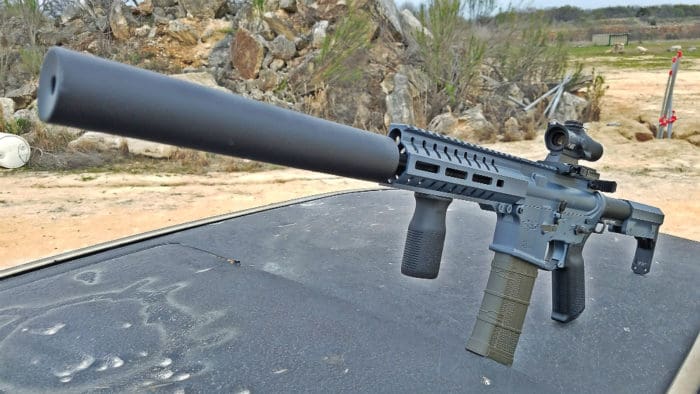
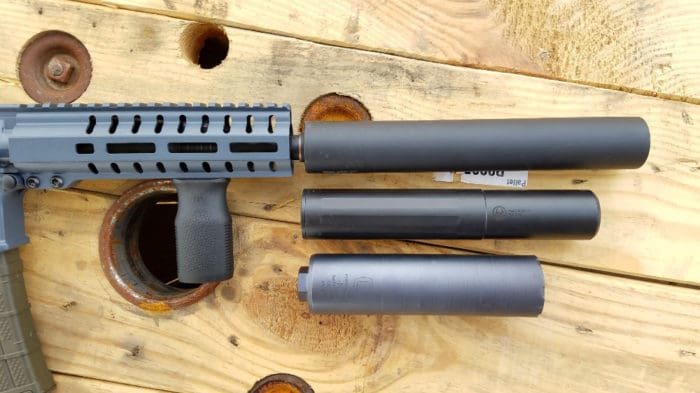
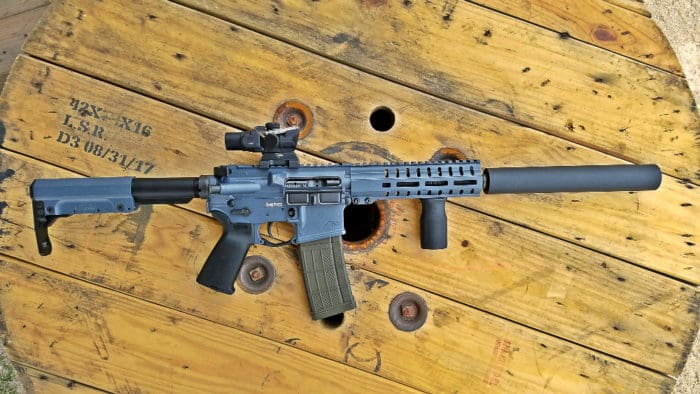
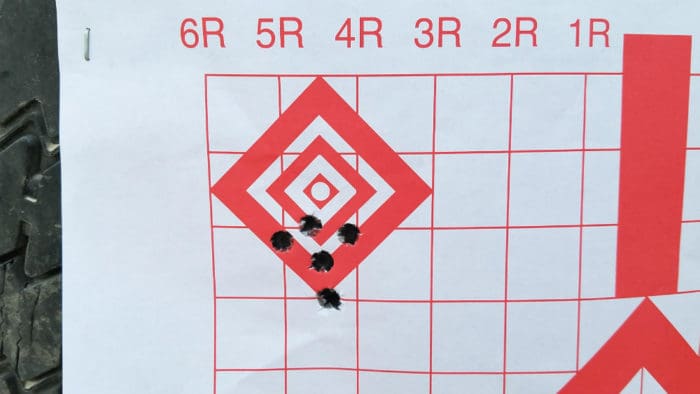
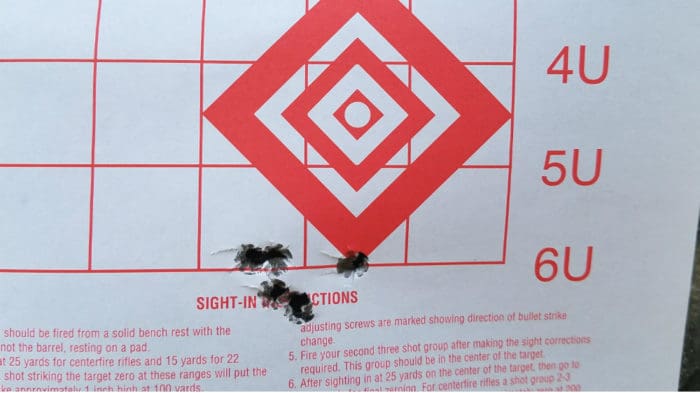
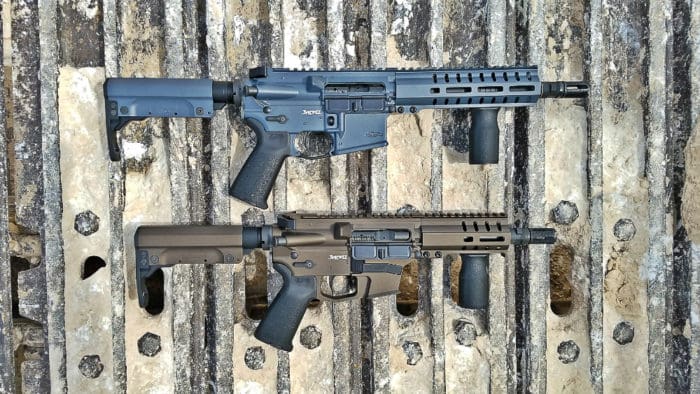
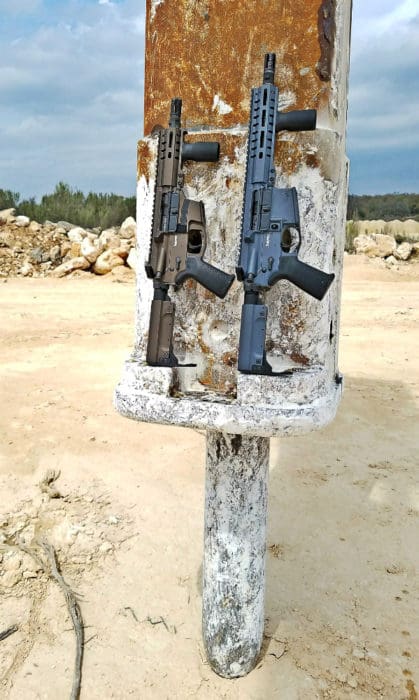
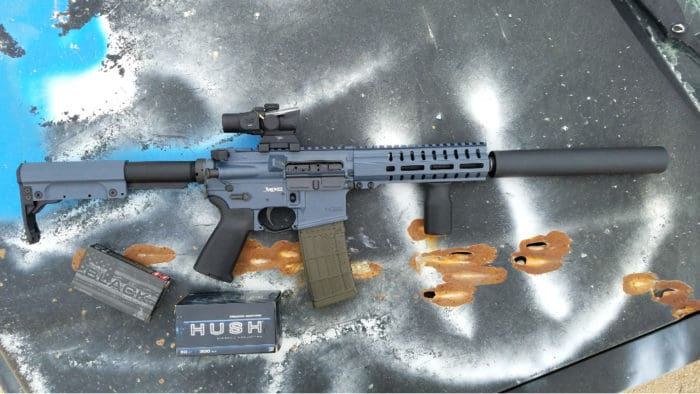




fanboy socom cartridge with no real use in this junk
300 Blackout still a thing? Who knew?
Stay tuned for a more serious comment. Ran out of Wheaties reading the CMMG product announcement.
It’s extremely popular for wild piggies. Suppresses very well and runs in standard AR-15s through standard magazines (while retaining 30-rnd capacity) and standard bolts, etc. I wouldn’t call it useless, as this particular setup would be the bees tits for this sort of hunting or any general truck gun / ranch gun sort of use.
You could make a similar gun in 5.56, but ballistics with an 8″ or 10.5″ barrel aren’t so favorable and it doesn’t suppress well on short barrels, either. Higher ammo cost aside, 300 BLK is a better caliber for this format.
300 BLK is optimized for suppressed SBR platforms, which, as Jeremy said, make fantastic home defense/truck/pig guns.
If you have some aversion to NFA stamps then of course 300 BLK isn’t for you, but if not please tell me what other platform can you get solid rifle ballistics from with only a 7-8″ barrel?
Are SBRs still a thing? A pistol requires no ATF BS and with the adjustable braces, there is no reason to SBR ever again.
PS I have several 300BLK pistols. The cartridge is designed for short barrels unlike 5.56/.223
Well…that’s what we were all saying until the ATF said they’d prosecute people for a 10-year Federal felony with up to $250,000 fine for shouldering a pistol brace. While there are a few really great braces out there, the ability to run an actual stock sure lends itself to far more shopping options and, as they’re properly designed for putting on one’s shoulder and taking a cheek weld, they do tend to provide a better shooting experience than “incidentally shouldering” a pistol brace.
Like shoelaces, shouldering a pistol brace is legal again. They saw their stupidity and saw the light. Something about a stopped clocked being right twice a day
Well, “incidentally shouldering” is legal and some believe it applies specifically and only to SB Tactical’s brace products. Not to mention the fickle nature of these rulings that have gone back and forth and may well continue to do so. Don’t get me wrong, I’m NOT anti pistol brace or even anti pistol brace as a pseudo SBR substitute type situation. However, there are some benefits to going through the SBR rigmarole.
While I agree that a true stock may have some slight shooting advantages, several of todays braces are darn close to equal. The new SB A3 as an example offers a cheek weld and is adjustable.
Also, a SBR or pistol is not typically used for precision shooting where a rifle stock is best.
Pistols:
-don’t need a $200 tax stamp
-have no ATF hell
-can be transferred and sold easily and quickly
-can be taken to any state that your carry license has reciprocity, and transported through all 50 states
-does not need ATF advance approval to be taken out of state.
-can be in the passenger compartment of a car.
-can change calibers and configurations without ATF notification and approval.
To me, the benefits of a pistol far outweighs the benefits of a SBR stock. Your mileage may vary.
I don’t disagree with your premise. There are a lot of advantages to a standard pistol vs. an NFA rifle. In fact, I think I laid out all of the pitfalls of SBR ownership, steps you have to take, and lots lots more here: http://www.thetruthaboutguns.com/2015/05/jeremy-s/nfa-for-beginners-form-1-to-manufacture-an-nfa-item/
Though that article already responds to many of the things you just mentioned, I’d like to directly comment on some of your bullet points here, too. There were all ways in which a standard pistol is better:
-can be transferred and sold easily and quickly
You can do this with an SBR, too, by simply reverting the gun to non-NFA configuration and selling as a standard firearm. For instance, if you purchased the BANSHEE as seen in this review and decided you wanted to sell it, you could install a 16″ barrel in it and sell it via normal means. There’s no mandatory paperwork or anything involved in that, either. The ATF’s SBR FAQ page used to contain the following:
-can be taken to any state that your carry license has reciprocity, and transported through all 50 states
-does not need ATF advance approval to be taken out of state.
Some believe the same thing as above can apply if you want to travel with your gun — revert it to non-NFA configuration and now it isn’t an SBR and now you can travel with it as though it’s a standard rifle or pistol. I kind of think that’s taking a risk, in particular because you presumably still own the parts to revert it back to NFA configuration and you’re also assuming your existing Form 1 is still valid to do so, but I know people think they’re in the clear for doing this. Otherwise, yes, you need approval. On the plus side, if you travel between two places regularly the ATF will approve crossing state lines with your SBR for up to 364 days at a time. This is what I did while living on the WA/ID border and going back and forth all the time. There’s no cost; you just send them a letter and they send you an approval a couple weeks later. I would do that once a year.
-can be in the passenger compartment of a car.
Restrictions on having a loaded rifle in the passenger compartment only exist in some states. There is no restriction on this here in Texas, for instance.
-can change calibers and configurations without ATF notification and approval.
This applies to SBRs as well. You only need to notify them if it’s a permanent change. Which basically means you no longer have the components necessary to revert it to the configuration listed on your Form 1. And even if that’s the case, it’s simple notification that’s required. There is no approval needed or no waiting for a response from the ATF, etc. It’s just firing off a letter. For example, there’s nothing wrong with having a registered SBR lower and putting multiple uppers on it in different lengths and calibers and whatever else without notifying the ATF as long as it isn’t a “permanent” change from the caliber and length you put on your Form 1, and if it is you just send them a letter with the new info and that’s the end of it.
The biggest issues for me are 1) traveling out of state and 2) it cannot be loaned to people or otherwise in the possession of anyone who isn’t me or the one other person who’s on my trust.
You can also order up or build a 12″-14.5″ (or whatever) upper in 5.56, slap it on the SBR lower without additional chips or waits involved, and using my .30 cal suppressor with a 16″ 5.56 upper works real fine. Lotsa options, if your safe is not too full.
Y’all trying to tell me your getting reliable expansion at typical hunting distances from an 8″ barrel. Yeah your not. It aint my first day with this cartridge or shooting. Groups on paper don’t tell the whole story.
A neighbor took a large deer at 150 yards with a 9″ 300blk pistol. Dropped in a couple steps.
Proper 300blk ammunition is made with fast burning pistol powders designed to get full velocity in a 9″ barrel
Yes. Most 300 Blackout loads reach their full velocity within 10″ of barrel length and many in 8″ or so. There’s a huge market of projectiles designed specifically for the caliber in both supersonic (which is the typical choice for hunting use) and subsonic flavors. There’s at least a dozen options for 300 BLK projectiles that reliably expand at down to like 750 FPS (which you can achieve from like 4.5″ of barrel in this caliber!), and even with a 7″ or 8″ barrel you will achieve their full 1,000 to 1,050 FPS target muzzle velocities. Most of the 110 grain hunting loads will do 2,100 to 2,300 fps from an 8-ish-inch barrel and the ones designed to expand (and we’re talking the big names like Barnes TAC-TX and Hornady A-MAX) will reliably do so out to 300+ yards, with more flexibility from some of the niche manufacturers (e.g. Lehigh).
The caliber was literally designed from the get-go to run in 7″ to 10.5″ barrels with fast-burning powder, specifically for suppressed use, specifically for both subsonic and supersonic loads, and there is zero advantage to exceeding a ~10″ barrel length.
being an ex army guy I am so used to the forward assist that I no longer notice when it is present…but I am not sure I ever had to use it (except demonstrating SPORTS ). Are these things ever going to go the way of the dodo? Anyone find them super useful? slingshotting the charging handle seemed to serve the same purpose for me. uppers seem cleaner with out them but I wonder if manufacturers are afraid that folks will want to see it on there for nostalgia purposes. rotating bolts are nothing unique to the AR/M16 platform yet they are the only rifles that sport them right?
Plenty of rifles have a fixed charging handle affixed to the bolt (or otherwise have a reciprocating charging handle/knob that moves the bolt), and those can all be used as a forward assist.
I think its only proper function on an AR is for chamber checks. If you’re so inclined and want to use the charging handle to pull the bolt back far enough to see if there’s a round chambered or not, there’s a decently high likelihood that it now won’t go all the way back into battery. The forward assist will accomplish that.
As a way to fix a feeding/chambering issue during normal cycling or when dropping the bolt from lock, though, I think it usually causes more problems than it solves. If the bolt didn’t go into battery in the normal fashion there’s a reason for it. Trying to cram the round in by slamming the forward assist will often turn a stoppage into a full-on jam. I agree with you; in those cases you’re much better off sling-shotting the charging handle in an attempt to load the next round.
Good point on chamber checks. Personally i would never feel comfortable tapping a bolt back with FA, as I would have this illogical distrust that the round would fire, as compared to chambering from a full mag using bolt release, but that was probably just a product of my unique OCD.
I can never do without a forward assist. As Jeremy said, plenty of guns have a forward assisting function. In fact, very few guns do not have it. All pistols, all bolt guns, all milspec ARs, AKs, SCARs… you get the idea.
Aside from press checks and silently lowering the bolt, the forward assist is critical in malfunction clearance, IN AN EMERGENCY, as in, “if you don’t shoot now, you die”. If you’re on a flat range shooting for fun, waiting and observing will serve you better.
The forward assist forces the extractor over the rim for extraction. That’s its most important function. On an AR, if the bolt is not completely in battery, racking the action will only send the nose of the next round into the primer of the half-chambered round/casing. So if a properly functioning weapon somehow has a stoppage due to dirt ingress in a gunfight, there’s a high likelihood where the bolt is stopped before it’s fully in battery. This is where you need to push the forward assist before pulling the bolt.
You can try this with 2 snap caps. Load one snap cap into the mag, then the other on top of it. Slowly lower the bolt, but do not allow the bolt to go in battery, as if dirt/mud slowed the action. Now, tap-rack. Most likely the nose of 2nd round is now jammed into the primer of the first. What began as a simple stoppage is now at best a doublefeed, or at worst kaboom time. Not a good idea in any sense.
30 shots from a 8 inch glass and I blacked out
I own a CMMG mk4 300BLK pistol, and I have to say that was without a doubt the nicest mil-spec trigger I’ve ever felt. I actually considered not replacing it at all. I mean, I did…because I’m a trigger snob and I love flat faced triggers. But I was seriously impressed with their out of the box offering.
If you love to wear vests? so get this amazing Red Puffer Vest which is a favorite of all girls and it is the most-rated and most selling outfit in our store, shop now because the stock is limited.
All gun reviews are fake. They get paid or get free guns or the gun maker buys ad space.
The truth is CMMG uses inferior materials like 6061 aluminum uppers and 4140 barrels and non carpenter steel for bcgs with a cheap coating.
And they charge mil spec prices. Truth about guns my a$$. Lying punks.
Comments are closed.